Introduction: It is an undeniable fact that geo-political competition between US and China in Indo-Pacific region over the control of oceanic transit path that connects Pacific Ocean with west Asia and beyond through Indian ocean has created a looming crisis between the opposing regional neighbours around. To understand prevailing whole scenario, we need to understand the geography of south Asian region and the mutual relationship between the countries of this region.
Geography & Mutual Relations: To begin with, we need to analyze the following sets of geographical maps of our region with a close look at China’s position here:
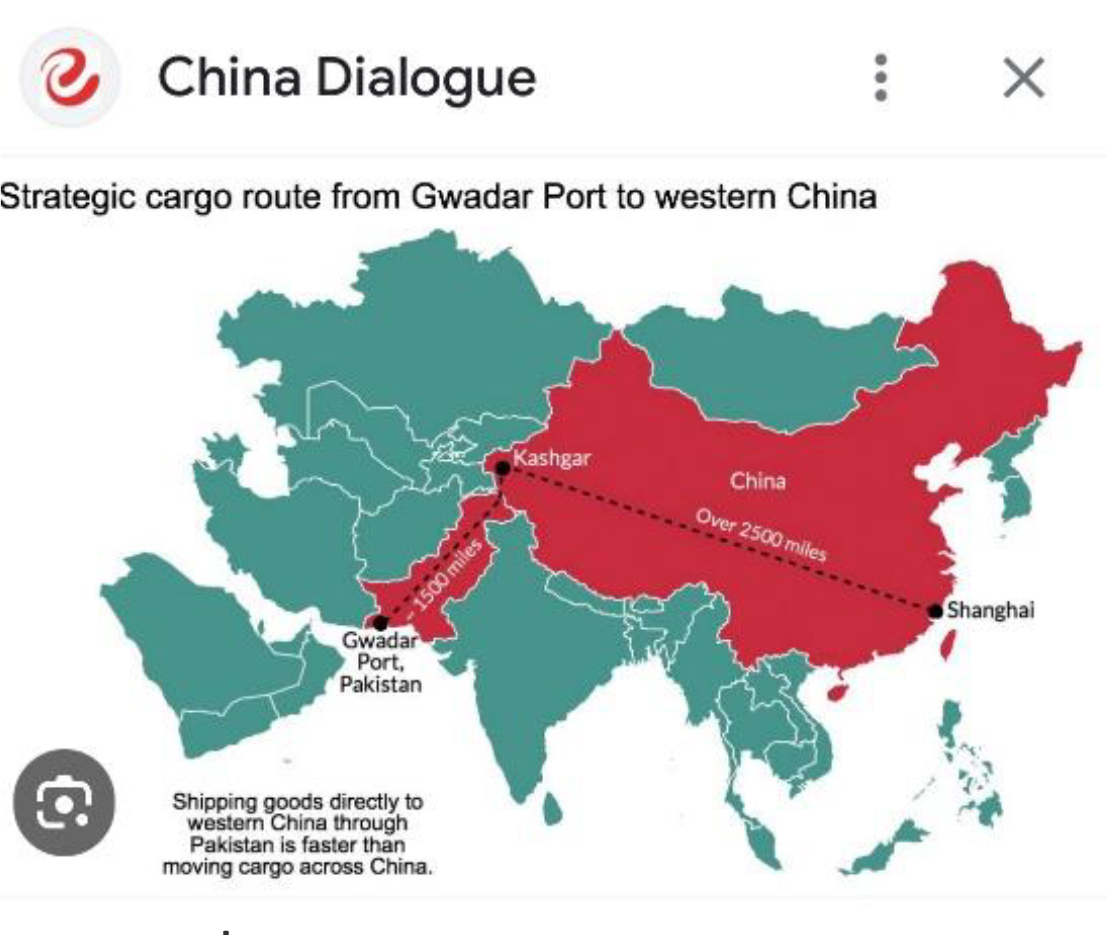
Picture one shows, China-Pakistan land corridor connecting Pakistan’s Gwadar Sea Port with China’s Xinjiang Region that is going to be China’s one trade path of connection with west Asia and beyond, let alone China is a traditional Allie of Pakistan and alike Pakistan a common adversary of neighbouring India.
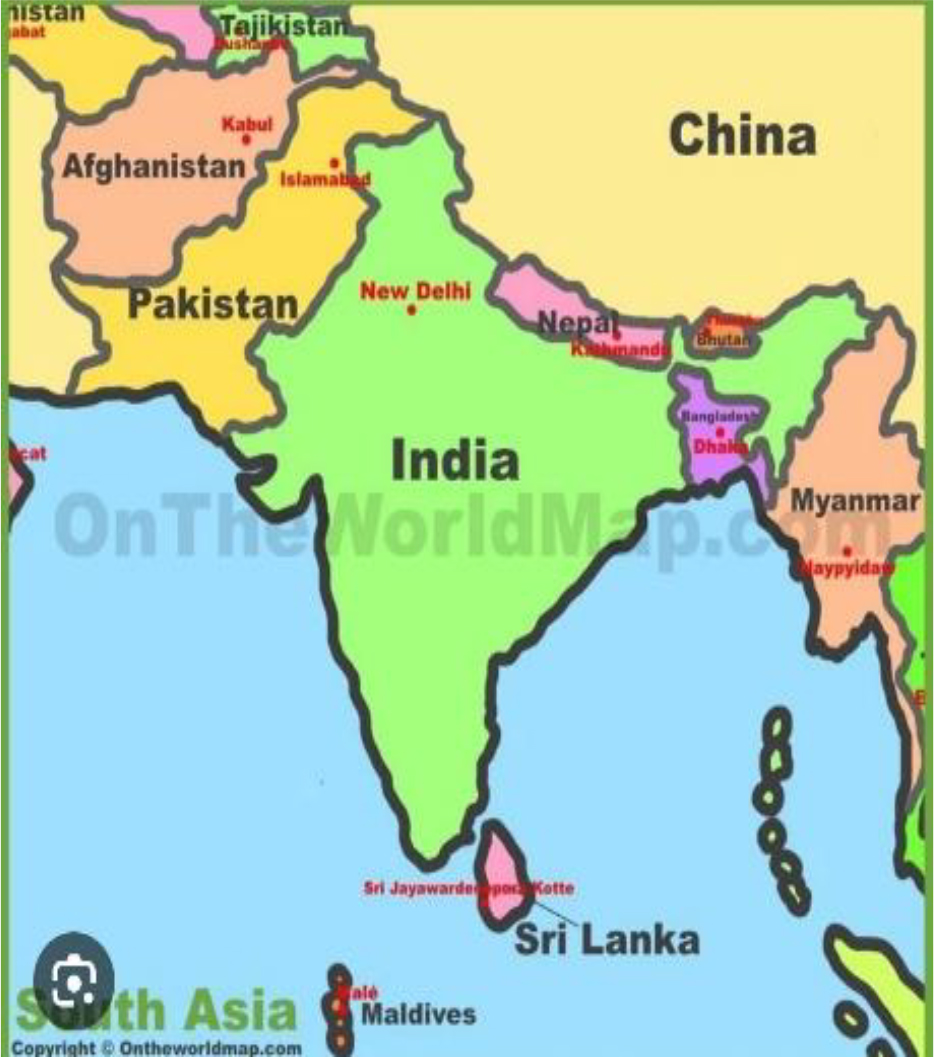
Picture two shows the whole south Asian coast line ashore Indian ocean.
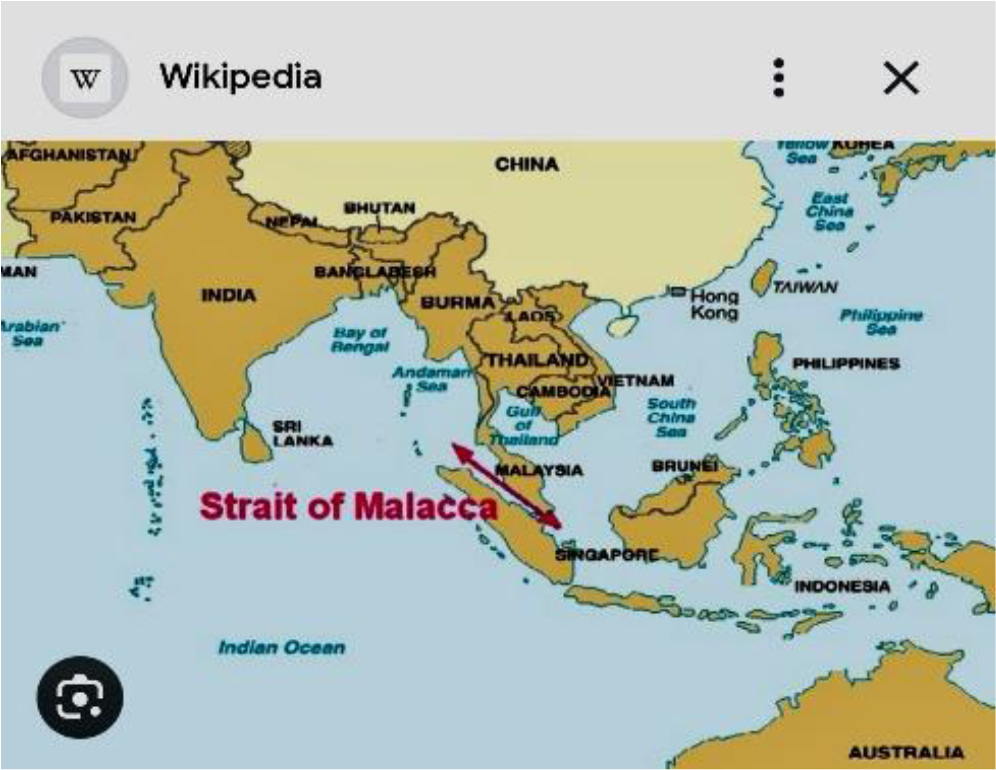
Picture three shows the wider region/ meeting place of Indian and pacific oceans where it shows Malaysian Strait of Malacca, the shortest marine route between Indian and Pacific oceans for most of the northern pacific east Asian countries such as China, Japan, Korean peninsula (two Koreas) etc.
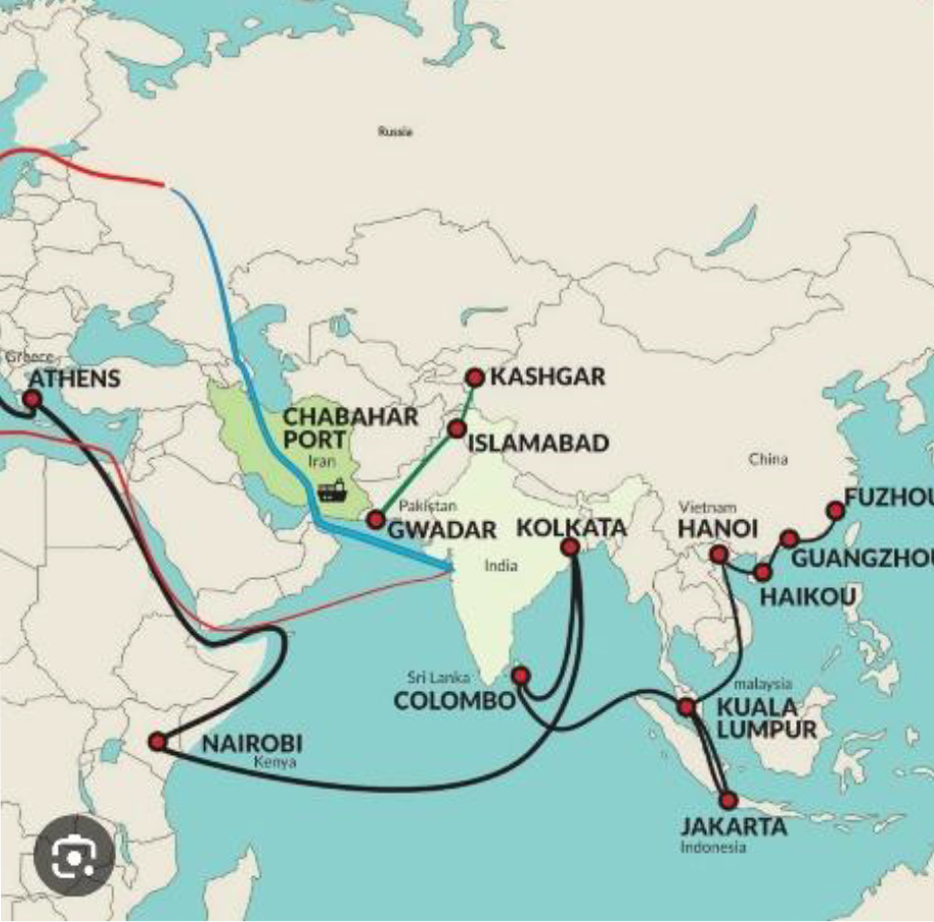
Picture four shows the various commercial marine routes that connect the countries of Asia, Europe, Africa and beyond to North and South America through Atlantic Ocean.
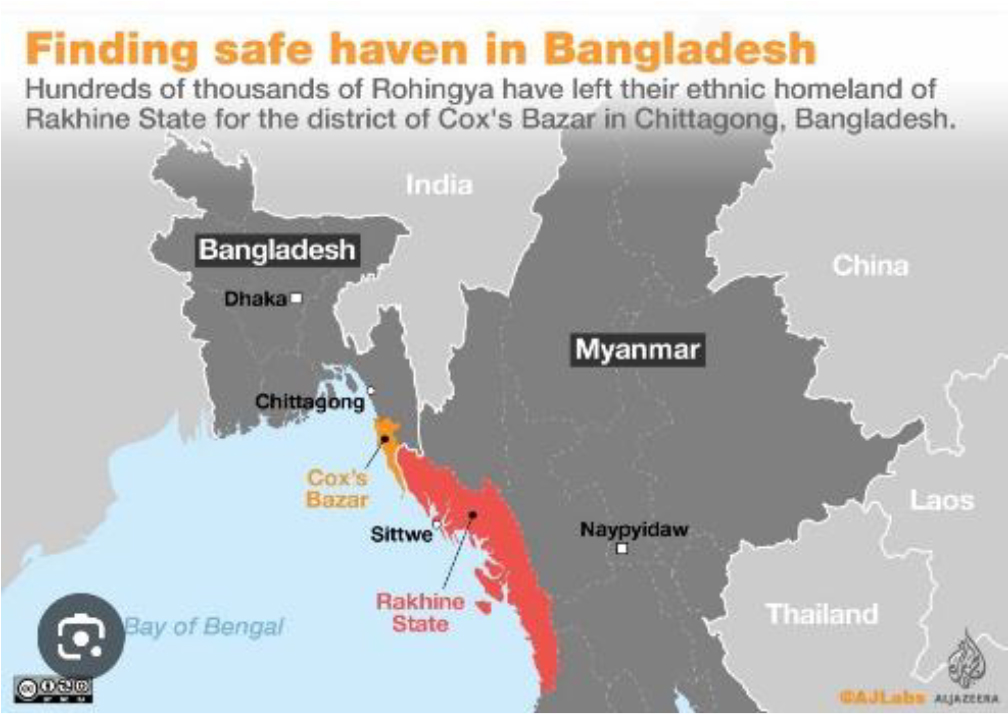
And finally, picture five shows south Asian region with special focus on Bangladesh and Myanmar and Myanmar’s Rohingya populated Rakhine State (in red). About 0.8 million Myanmar Rohingya citizens were pushed out of Myanmar towards Bangladesh by regime there as a part of their ethnic cleansing of the population.
Background Story: On the basis of prevailing geographic reality of indo-Pacific region, the countries around are pushed vigorously into polarization of choosing between either of the two opposing camps e.g. US or China to take economic strategic position in favour of their respective pole Master. Not to mention, Chinese unprecedented typhonic speed economic rise and subsequent to its accelerated aspirations to take a leading global standing, made US nervous of loosing its control over the wider regions all over, which it has been enjoying since the end of WW2 and Korean war. The US desperately intends to continue its status as
global leader. However, it, in fact, is a diminishing power everywhere unquestionably.
To dig further into the crack between these two, we find, the geo-political confrontation between US and China is primarily based on safeguarding their opposing economic interests around the glove for their respective national interest. Both nations, at least in public, express their confrontational acts as mere competitive one to tone down the temperature and pretend to be seen as partners in economic cooperation with each other. This new approach came into effect within globalization era after the end of “so called” cold war, the motive of which, in fact, was nothing but making capitalist economic integration between the countries to fill out the vacuum of the failed “socialist economic school of thought” among the nations.
However, soon after, it became another bone of contention between US and China and began to evolve as a new source of polarization surrounding them as a result of above said very fast Chinese economic growth. To create the point against China, the US blames on existing Chinese autocratic political system and suppression of its population violating their human rights within the country. However, the US realizes well that with the fast economic rise, China is advancing its defence industry faster and quicker than any time before becoming a strong military power in this region under US’s watch that at the end of the day will deem as an existential threat for its allies in wider Indo-Pacific region. It also finds itself on the other side of the hemisphere, far away from Chinese neighbourhood, to provide immediate protection to its allies in this region in the case of Chinese advancement there. It, therefore, picked up India as its regional agent to guard against Chinese progress. US justification in this regard is that India is a democracy and has confrontational relationship with China which will be a win win situation for both India and US. India also dreams to become a regional power in its neighbourhood.
US’s Uncertain Approach
Whatsoever, US’s position involving India in order to contain China may be, it is already clear that US is struggling with India as a reliable strategic partner to make a case against China as India is not a liberal democracy like west and undermining human rights and minority suppression is deeply prevalent under PM Modi’s BJP rule there. Moreover, India’s relationship with its small immediate neighbours is at all times low state. It cannot stand against neighbouring world’s second largest economy China, nor can it handle its nuclear arch rival Pakistan with its military strength. On the contrary it attempts to control its weaker neighbours such as Nepal, Sri Lanka, Maldives, Bhutan, and Bangladesh using bully tactic and by doing undesired interference into the country’s internal affairs. Majority of the population of its neighbourhood are highly irritated for such behaviour of India’s Modi regime. In spite of such reality, it is very much unclear as to how US will work with India on moral standing to guard against China and gain the hearts and minds of the population to stand against/ reject Chinese advancement throughout the region. The US has made a deal not with a regional idol rather with a villain around.
Containing China: US Plan
Now, if we look back at the map shown in the picture one above, we can see that China is working on to availing a commercial land corridor on its west end through the territory of its traditional ally Pakistan to get passage to Indian ocean and beyond for its shorter international trade route. Simultaneously, US suspects that China may have been planning to build another second economic land corridor as well that will connect its south-central region through friendly Myanmar by creating a sea port in Rakhine State of present Myanmar (please have a look at picture five). Therefore, US believes, should Myanmar’s Rakhine State can be separated from it, then that will go against the interest of China finding a second route for its international trade. Therefore, US wants Rakhine State either becomes an independent country or joins with “culturally and religiously” much homogenous Bangladesh. In that changed geographical state, because of Indian land in between China and Bangladesh, China will not have any direct opportunity of finding a land corridor to Bay of Bengal as its second route to Indian ocean.
Also, if we analyze Picture three and Picture four we see the Strait of Malacca that goes between two main islands of Malaysia, the shortest commercial marine route to China’s eastern ports from Indian ocean. US desires to surround and shrink Chinese international route from using that route in any future conflict with it. US intends to do that with the help of India, Malaysia, Australia, and Indonesia. It finds, in addition to its own, the best response from Indian navy to deploy to sabotage Chinese trade route around as its bullying tactic. Interestingly, the location is strategically much like shorter route of Bab El Mandeb of Red Sea to Europe and beyond for China and east Asian other countries. Although, US knows well that China is no longer a country to be bullied so easily.
Bangladesh Needs an Independent Mature Game Plan
Bangladesh has fallen into a regional geopolitical tsunami much like Pakistan was in during Soviet invasion of Afghanistan. US happens to be a common player in both theatres. Bangladesh should not jump into the somebody else’s (Myanmar’s) conflict as a 100% accomplice of United States same as what kind of mistake Pakistan made back then. We should not act as a con artist of US’s chess board. However, it should also be considered that this war is spilling within our borders, and we cannot effort to turn our back from the plight of our fellow Rohingya brothers and sisters. We want or not, it affects us too. We cannot simply ignore our historical connections with Rakhine population there. Presently, it looks like Myanmar is facing a possible collapse from within fighting many different fractions of population. It is very likely that the country will disintegrate and should such development happens, Bangladesh will need to have a decisive role with a clear vision of shouldering a responsible role.
A Proposal: Two Possible Options
Option one: An Independent Rakhine or Arakan Country with Bangladesh’s moral and institutional support as they are our neighbouring brotherly people.
Option two: If it appears that the majority Rohingya population find their ultimate destiny within Bangladesh nation, in that case there must be a referendum in Rakhine state under UN supervision. If the overwhelming majority of Rohingya population want to join us then they are most welcome. We must be careful that we do not need another “Kashmir situation” in our neighbourhood for our mere geographical enlargement’s interest. Moreover, in such event, we may need to change the name of “The Peoples’ Republic of Bangladesh” to something like “Federal Peoples’ Republic of Bangladesh”.
*Yes, it’s the story of another day though, Bangladesh needs to do its homework prior-hand today.
Conclusion
Conclusion Alike any other previous conflict, the Indo-pacific tension between two super powers has created such a big upheaval in the whole region that this fire may fuel the burning and destruction of the whole region. There are both challenges and opportunities alike. Any such endeavour needs national consensus with citizens on board. But unfortunately, publicly rejected present unelected and unmandated Indian installed fascist regime is not the right authority dealing with such an issue of global implication. We need a democratic peoples’ government to proceed on with peoples’ mandate. The Final Note: we have learned from the history of previous conflicts around different places that there were always some underdogs who emerged as victorious with immense potential possibility for the whole nation at the end of the day. I pray and hope that we are going to be those lucky ones.
References: Maps were taken from Google.com
